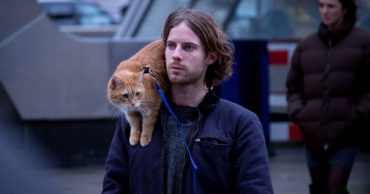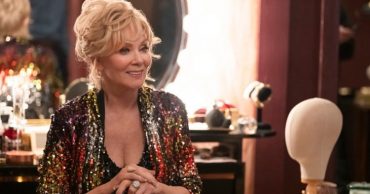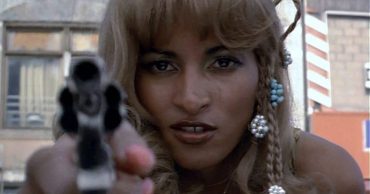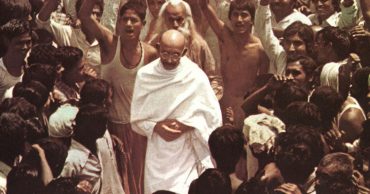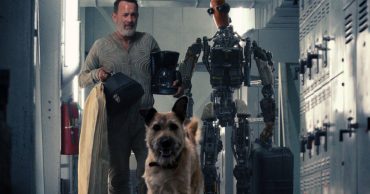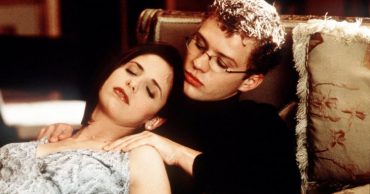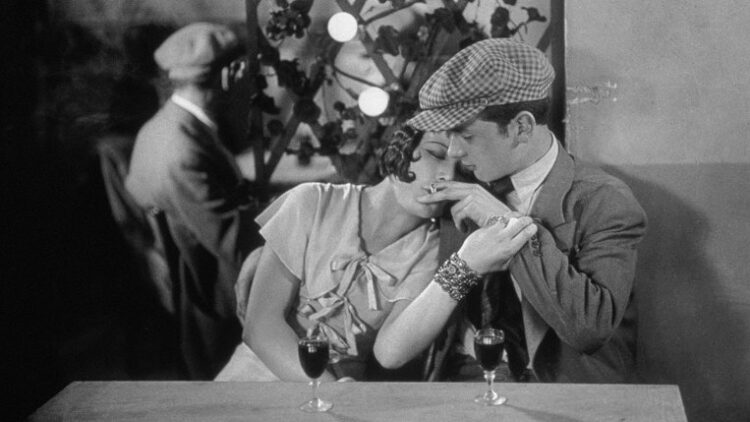
The year the first automobile with a diesel engine made its first trip, the first Mickey Mouse comic strip appeared, the Benny Mereoff hit “Happy Days Are Here Again” topped the charts, Babe Ruth signed a contract with the New York Yankees, Mahatma Gandhi began his historic Dandi March to protest against the British salt tax, and Colonel Sander founded Kentucky Fried Chicken, 1930 was quite the year the world over. Of course, it was also quite the year for the entertainment industry, bringing to the audiences a mix of films from various genres and luring them into movie theaters. And here we are with a little information that will help you live like you were living in 1930, or at least plan a night out at the movies to watch any of the most popular work that year. All you need to do is pick out the title of your choice from our list that brings you the best of the lot — What A Night Out At The Movies In 1930 Would Have in Store For You!
Earth
An Olexander Dovzhenko film, Earth was yet another impactful film from the famed Ukrainian director and recreates the challenges of a time when the people of the Soviet Union were debating whether the newly introduced process of collectivization was indeed a good thing or not while still being forced to adopt it. The storyline is based on the lives of a simple farming community and the impact the new rule of collectivization has on its people and the film shows how different factions fight one another only to show their disdain or support for the move. Welcomed with standing ovations in premieres and in theaters, and also making headlines for its political overtures, the reactions to the film were indeed a contrast in many ways. However, what stood out was that the film made everyone rethink how bureaucratic and political decisions impact the common man more than we know. Hailed as one of the greatest films ever made and certainly one of Olexander Dovzhenko’s most impressive works, Earth stands testimony to the great divide that exists between the government and its people.
L’Age d’Or
L’Age d’Or or Age of Gold or simply The Golden Age, this French film was a surrealist satirical comedy directed by Luis Bunuel and explored the changing times witnessed in society with different paradoxes lined up against one another leading to hypocrisy on several levels. One of the earliest sound films to be made in France, the project nevertheless relied on title cards like those used in silent films to narrate to the audience the happening throughout the film. Replete with visual statements that spoke against the many hypocrisies of the time, the screenings of the film were marred by violence, prompting the Prefect of Police of Paris to ban the film and have it reviewed by the Board of Censors again. From being labeled “poisonous” and corrupt” to coming under attack from several quarters, L’Age d’Or proved to be a film that ruffled more than just feathers. Of course, considering how creative thoughts that are beyond their time are met by the masses and especially by the self-appointed authorities of society, it was no surprise that a movie that was indeed a brilliant piece if work met with the same fate.
Under the Roofs of Paris
A film directed by Rene Clair and from the famed French movie stables of the time, Under the Roofs of Paris is one of the earliest works in the musical-comedy genre, with enough dark overtones in the film to keep audiences thinking too. Based on a storyline that revolves around a young and beautiful Romanian girl and her many suitors who try to win her affection, the film has an innocent young man, his best friend, and a notorious gangster all vying for her love and attention. With several twists and turns, including the wrongful imprisonment of the young man, a knife fight that rekindles a friendship, and the ultimate sacrifice of love for the sake of an old friend, the film is as much a comedy as a tragic love story, and audiences are often left wondering whether they should be laughing or crying. When it was released, the film didn’t do that well in French territories but the worldwide release later in the day had audiences clamoring for it, announcing that it was indeed a success. After its overseas screenings, it was released in France once again, and this time around, it was well-received by the French audience too.
All Quiet on the Western Front
Depicting the horrors of the First World War and considered one of the best works to truly bring to the screen the realities of the battles that were fought and the men that were lost, All Quiet on the Western Front proved to be among the first anti-war film to truly make an impact on audiences. While most other films of the time focused on the larger than life frames of the world war and mostly showcased the heroics of a few than the sufferings of the many, this film sought to bring everyone’s attention to the repulsive and gruesome nature of war and how it really leaves no one proud to be on the “winning” side. Most critical reviews, as well as reactions from the audience, proved that the film was as close to reality as one could get and even today, All Quiet on the Western Front is considered a class anti-war film that reveals to every human the morbid realities of it all. In Germany, the film was banned the first time and after a brief release of a heavily censored version, was banned again.
The Blue Angel
A musical comedy with dollops of drama thrown in to make things even more interesting, The Blue Angel was a German piece of work directed by Josef von Sternberg and had Marlene Dietrich, Emil Jannings, and Kurt Gerron leading the cast. Based on the 1905 novel by Heinrich Mann titled Professor Unrat, the storyline of the film revolves around the detrimental journey of a college professor who is well-respected descending into the role of a clown at the cabaret before his madness completely overtakes his mind. Shot in German as well as English, the German version is considered more in line with the original idea of the film, considering how it is longer than the English version and has actors speaking fluently, as against the obvious struggles they had with the English language. Nevertheless, irrespective of language and length, The Blue Angel was noted for several intricacies, including the fact that despite being a film that was based on the downfall of a man, it did everything it could to maintain his dignity throughout the plot, seldom allowing audiences to see his shame firsthand.
City Girl
A film based on the play named “The Mud Turtle” by Elliot Lester, City Girl was directed by F.W. Murnau and had some last-minute sound additions made to it despite being shot as a silent film. The premise of the film is based around the time of the Great Depression, an era when money was scarce, tempers ran high, and just about everyone was frustrated with the way things were going. Based on a troubled love story between Lem and Kate, the film shows how Kate is not accepted by Lem’s father, thinking she was after his money and nothing else, and then proceeds to introduce some more twists and turns before both the young man realizes his folly of never being able to stand up to his wife and the father realizes his own error in judgment in recognizing the true nature of his daughter-in-law. Starring Charles Farrell as Lem Tustine, Mary Duncan as Kate, David Torrence as Mr. Tustine, and Edith Yorke as Mrs. Tustine, City Girl makes for quite an endearing film.
Animal Crackers
Brought to life by the Marx Brothers — Groucho, Harpo, Chico, Zeppo — and Lillian Roth and Margaret Dumont, Animal Crackers is an out-and-out comedy film that has director Victor Heerman bringing to life a funny storyline revolving around the disappearance of a valuable painting. With Groucho Marx playing the role of Captain Jeffrey Spaulding, an explorer who has just returned from Africa, Harpo Marx playing the role of a professor, Chico Marx donning the role of Signor Emanuel Ravelli, and Zeppo Marx playing the role of Horatio Jamison, the comic timing of the Groucho Brothers help the movie land right on its feet and had enough of one-liners and jokes in the film to keep audiences laughing. Some of these lines are popular even today! Among the most popular quote in the film include, “One morning I shot an elephant in my pajamas. How he got my pajamas, I don’t know,”, “Africa is God’s country, and he can have it,”, “Every since I’ve met you, I’ve swept you off your feet,”, and “There’s one thing I always wanted to do before I quit — retire”. Add these to the hilarious physical comedy routines and you know a night out at the movies in 1930 would have been hilarious with Animal Crackers on your agenda.
People on Sunday
People on Sunday, Menschen am Sonntag in German, is a drama from the silent era that has been pegged as one of the most influential films of the time that had an impact not just on German cinema but also on Hollywood. So you can only imagine how innovative a work it must have been at the time! Directed by Robert Siodmak and Edgar G. Ulmer, the film was “a film without actors”, and this was something that was openly announced as the subtitle of the film. The characters who appeared in the film were not professional actors. Instead, they were normal everyday people who were simply doing what they do best for the film — their regular jobs! The film simply observed everyday life in a Germany that was quite different from the one most of the world knows, the one before the advent of Adolf Hitler in the pages of its history. And as a movie, was a hit that surprised everyone. It simplistically followed the lives of five main protagonists over a weekend and that’s how simple it really was. Nevertheless, it showed the world as well as its filmmakers that not all great works need great budgets and that even movies made on a shoestring budget can prove fameworthy. A picture of a country that was oblivious of the fact that it would soon be hated by the rest of the world, People on Sunday is indeed a touching tribute to all things simple.
Hell’s Angels
Originally meant to be a silent film, and made that way for more than a year and a half, the advent of sound gave the filmmakers of Hell’s Angels the idea of adding sound to it, so everything about the film changed overnight, from the heroine who had a heavy accent and couldn’t have been part of this new version as well as the budget of the film, which had now shot up because the project would now take three years. Nevertheless, the conviction of Howard Hughes and his penchant for doing things his way ensured that the project stayed on track. And although the film fell short of recovering even its production costs at the box office, raking in only $2.5 million against the investment of $2.8 million, the work was considered a landmark film. Even while filming, the movie was making headlines, some of them for the wrong reasons. The unfortunate deaths — three stunt pilots lost their lives during filming and so did a mechanic. Even Howard Hughes suffered a serious skull fracture after crashing an aircraft during a particularly dangerous scene for the climax of the film, trying to prove to the principal stunt pilot that the stunt could indeed be done when the pilot said it was far too dangerous. Despite falling short at the box office, the importance of the film increased over time and today, it is considered one of the classics of the early sound and color era.
The Dawn Patrol
A film based on the First World War, The Dawn Patrol was directed by Howard Hawks and Richard Barthelmess leading the cast of actors that included Douglas Fairbanks Jr., Neil Hamilton, Frank McHugh, Clyde Cook, James Finlayson, Gardner James, William Janney, Edmund Breon, and more. At a time when studios mostly controlled the projects of actors, this one broke some barriers, with other studios lending some of their actors to the project. Another movie that experimented with lots of action in the air, trying to recreate all that went down in the form of dogfights and air patrols, the crew and cast as well as the studio went all out in terms of spending as well as the hiring of planes and pilots. The film did run into some rough weather though, with Howard Hughes filing a suit against it proclaiming that it was copying everything that he was doing with Hell’s Angels. There was also some infighting over the screenplay, with both Howard Hawkes and John Monk Saunders claiming that the original idea for the movie was theirs. However, it was eventually credited to Saunders, with the writer also picking up the Academy Awards for Best Writing as well as Screenplay. Successful at the box office and inspiring a novel among other adaptations, The Dawn Patrol proved to be a landmark film for several reasons.
That’s What A Night Out At The Movies In 1930 Would Have in Store For You!
Back in 1930, you could have chosen any of these films for a night out and you couldn’t have gone wrong. From comedies to tragedies and films based on war to those based on society, there was quite an impressive lineup to choose from indeed. And as much as enjoyed bringing to you a list of What a Night Out Out At the Movies in 1930 Would Have in Store for You, allow us to get going so that we can bring you more as a part of this special series!
 Follow Us
Follow Us
